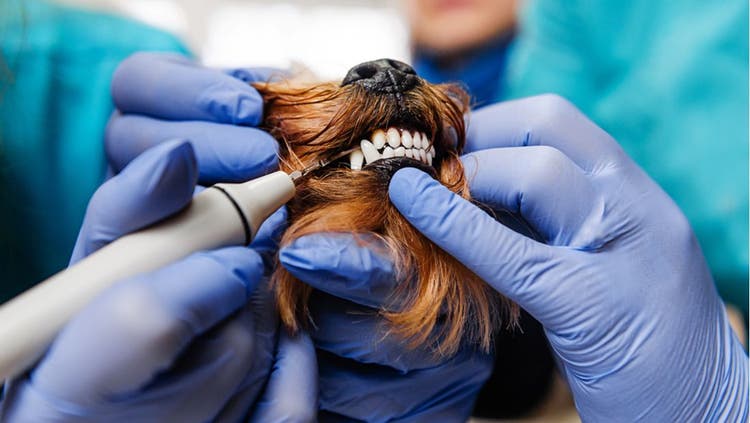
Dog Teeth Cleaning: Who Should Do It?
Caring for your dog’s teeth is critical to their overall health and wellness. Dogs can develop many different dental diseases that are often undiagnosed, painful, and can impact their overall well-being.
Dentists recommend that for basic care, in addition to flossing, we brush our dog’s teeth at least daily and have dental cleanings every 6 months. Learning to properly care for your dog’s teeth doesn’t only keep their mouth healthy and fresh but helps avoid costly cleanings.
How Often Should You Clean Your Dog’s Teeth?
The recommended frequency for dog teeth cleaning is to brush daily. Dental plaque builds up on the surface of the tooth and gum line. This plaque is a sticky substance that contains bacteria, food particles, and saliva. If the plaque is left untouched, it will mineralize and form into hard tartar, also referred to as calculus, in approximately 48 hours. By brushing daily, you minimize the chance of plaque hardening.
It is critical to remove dental plaque because once the tartar forms, it attracts more plaque, followed by more tartar. This build-up of tartar can occur both above and below the gum line, attracting dangerous bacteria, which can lead to the destruction of periodontal tissues.
Many vets recommend that pet parents start brushing while their dog still has puppy teeth, as it’s best to start forming good habits early.
How to Clean Your Dog’s Teeth
Cleaning a dog’s teeth can be simple, especially if you start early.
The first step is having the right tools. There are a variety of styles of toothbrushes and flavors of toothpaste, making it important to pick the right combination for your dog.
For example, a finger brush generally works best for large breeds like Labrador Retrievers, while some small brushes with handles may work better for small and miniature breed dogs. You may need to experiment to find out what works best for you and your pup.
How to Know You Did a Good Job
You can generally tell if you did a good job brushing your dog’s teeth by looking carefully at the color of the teeth and the gum line. Teeth should look white and have minimal pigmentation or build-up of discoloration and tartar. Gums should have a pinkish hue that lightens slightly when pressure is applied.
Where to Get Your Dog’s Teeth Cleaned
In addition to daily brushing, frequent deeper cleanings are recommended. The frequency of your dog’s cleaning appointments will depend on your ability to brush your dog’s teeth and your dog’s individual dental health, which is often a result of genetics.
If you notice that your dog has bad breath, the early signs of tartar buildup, or gum disease, see your veterinarian. Most vets routinely perform dental cleanings and, if they do not or your dog requires advanced dental procedures, they can recommend another veterinarian or veterinary dentist.
It’s also best to be candid with your vet about your budget, since dog dental cleaning costs can start to add up if your pet needs a complex procedure like a root canal.
What’s Involved in a Professional Dog Dental Cleaning?
During a professional cleaning, your dog will be sedated. A dental cleaning may consist of the following (which may vary from vet to vet):
- Basic blood work to confirm good organ function
- Thorough oral examination of the gums, tongue, and teeth
- Dental x-rays
- Manual removal of tartar
- Extraction of any diseased teeth
- Ultrasonic cleaning of teeth
- Polishing
- Fluoride treatment
- Documentation of dental care in the medical record